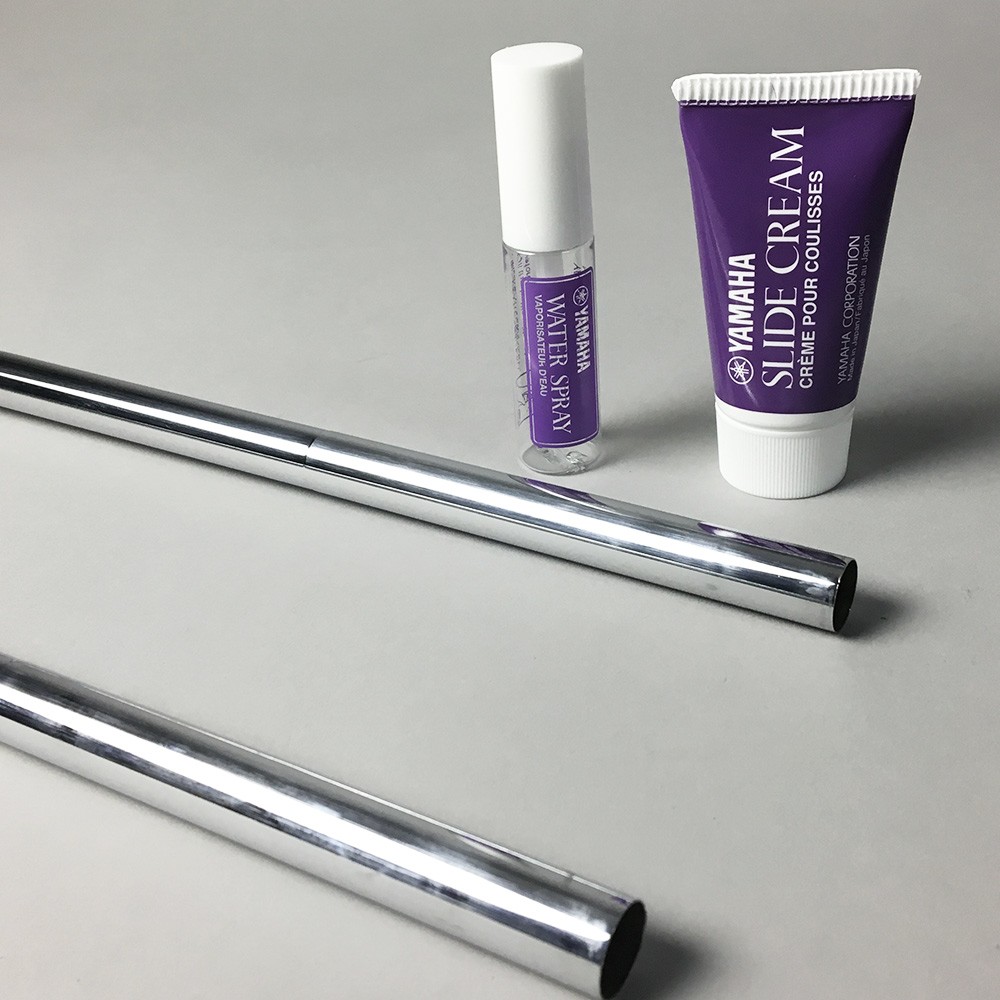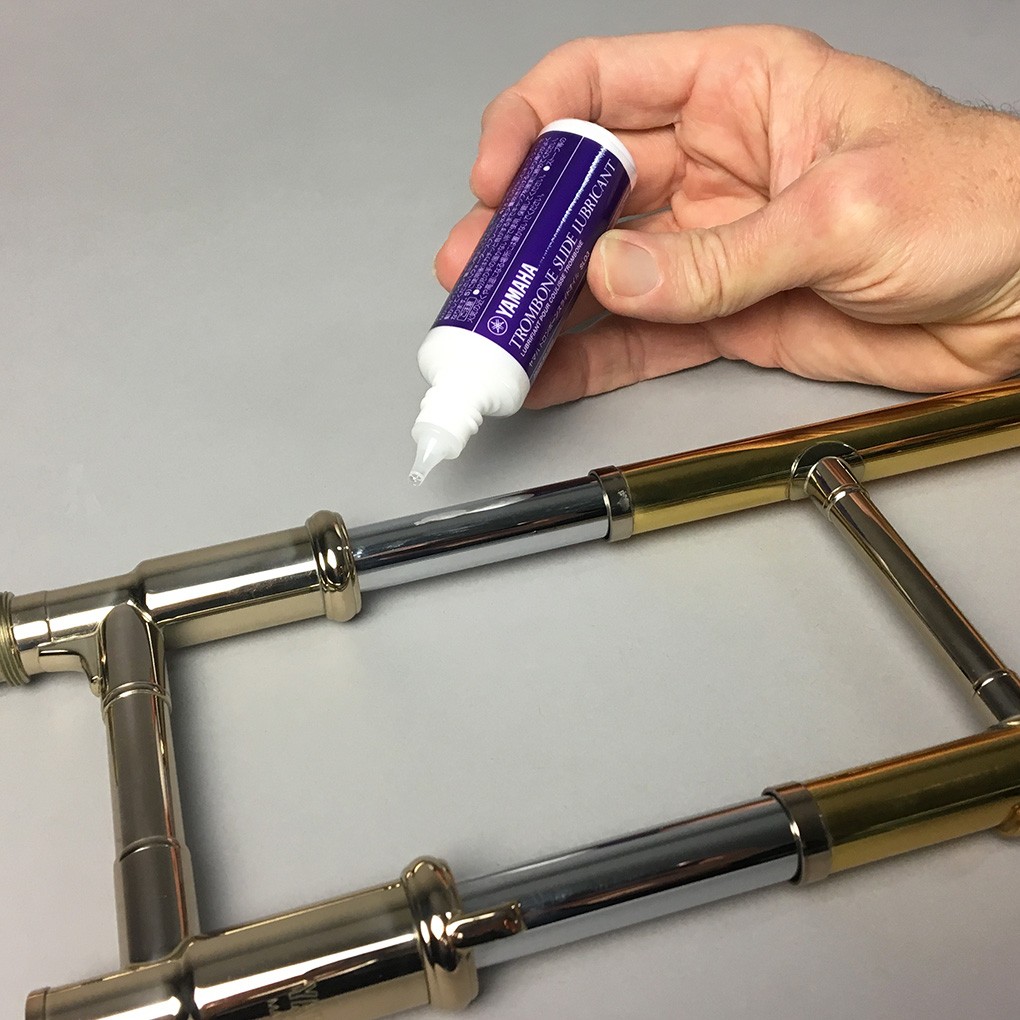How to Lubricate Trombone Slides
Regularly lubricate your trombone slides to keep them moving lightning fast!
Trombones are a critical voice in any band or symphonic ensemble, and compared to most other wind instruments, they are actually pretty simple machines.
If you’re a band director with a robust and rambunctious trombone section, it’s important to understand how to keep trombone slides moving lightning fast. Here are some tips on the best options for lubricating trombone slides.
READ: TROMBONE TEACHING TIPS from Boston Brass’ Domingo Pagliuca.
THE YAMAHA EDUCATOR NEWSLETTER: Join to receive a round-up of our latest articles and programs!
Trombone Slide Cream
In the past, trombones didn’t have the option of special lubricants created with high-tech ingredients, so players improvised with whatever they had available. One of the most popular choices at that time was old-fashioned facial cold cream – the kind that came in a jar and had a creamy consistency similar to yogurt or toothpaste. This may seem like an odd choice, but believe it or not when applied properly, this greasy cream did make a pretty good lubricant for trombone slides! You probably won’t find many players still using facial cream these days, but official cream-style lubricants remain a popular choice today.
Here’s the way I was taught to apply slide cream when I first learned to play trombone:

- The cream must be applied to the entire inner slide, so remove the outer slide completely and set it aside. Put the outer slide in a safe location where it won’t fall or get stepped on – it is very fragile and easy to dent or bend!
- Place a small amount of cream on your fingertip, a drop about the size of a pea. IMPORTANT: make sure you’re using trombone slide cream, and not tuning slide grease. Grease is too thick and sticky for the hand slide and should only be used for tuning slides!
- Starting at the bottom of one of the inner slides, spread that drop of cream around the fat part of the slide (called the stocking). Then continue working that same drop of cream up the tube toward the hand section. You shouldn’t need to apply more than that one drop of cream.
- Once you have coated that entire inner slide, grab the top of the slide with the tips of your thumb and first two fingers, forming a rough triangle around the tube. Then, with one quick motion, pull your fingers down the length of the slide to wipe off some of the excess cream you just applied. Your goal is to leave behind a thin layer of greasy cream spread evenly across the metal. If you can actually see the cream, there’s still too much!
- Repeat this process for the other inner slide tube, starting with a fresh pea-sized drop and again wiping off any excess.
- Once both inner tubes are coated, carefully put the outer slide back in place and work it up and down a few times to spread the cream evenly.
- At this point, the slide should feel fairly smooth, but for the best action use a spray bottle to apply a fine mist of water onto the inner slide tubes before and as needed while playing. The water will bead against the greasy layer of cream and act like tiny ball bearings to cushion the slide and make the action super-fast.
Depending on how much you play, slide cream may need to be reapplied after a few days or weeks. However, be careful – it’s easy to over-apply cream or use too much. When that happens, the slide can get gummy and slow even with water. Remember, if you can actually see the cream, there’s too much, so clean the slide thoroughly and start over with a fresh thin layer.
PURCHASE: Yamaha Trombone Slide Cream
Liquid Trombone Slide Lubricants

In more recent years, a variety of lubricants have been specifically created for trombone slides that are thicker than oil but still much thinner than creams. Some of these come as a two-part mixture, while others (like this Yamaha Trombone Slide Lubricant) come in a single bottle. Liquid lubricants are preferred by many professional players and are an excellent option for students and beginners because they are easy to use. And best of all, they make your slide incredibly fast!
- There’s no need to remove the outer slide for liquid lubricants. Simply place a few drops of lubricant at the top of each inner slide tube and allow the liquid to run down the slide. Don’t worry about using too much – any excess lubricant will drain out through the water key, so there isn’t any risk of excess buildup.
- Work the outer slide back and forth a few times to spread the lubricant evenly.
- The slide may already be fast enough to use at this point, but for the best action, use a spray bottle to apply a fine mist of water as needed while playing.
That’s all there is to it! You may need to re-apply liquid slide lubricants a bit more frequently than the cream, but the process is much simpler and quicker, and your slide will still move just as fast and maybe even faster.
READ: LEARN MORE ABOUT TROMBONIST WYCLIFFE GORDON
Oil
I don’t generally recommend using oil for trombone slides, but it is an option if you’re caught without anything else. Use a good quality valve oil, preferably something on the heavier/thicker side and apply several drops to the top of the inner slides just like you would with a liquid lubricant. However, do not use a water spray because that will wash away the oil, and you’ll need to reapply frequently.
No matter which type of lubricant you choose, it’s important to remember that a trombone slide must be clean, straight and free from any dents or physical problems to work properly. If you know there’s a dent or if the slide moves slowly or gets stuck even with proper lubrication, be sure to have the instrument looked at by a repair technician as soon as possible.
















